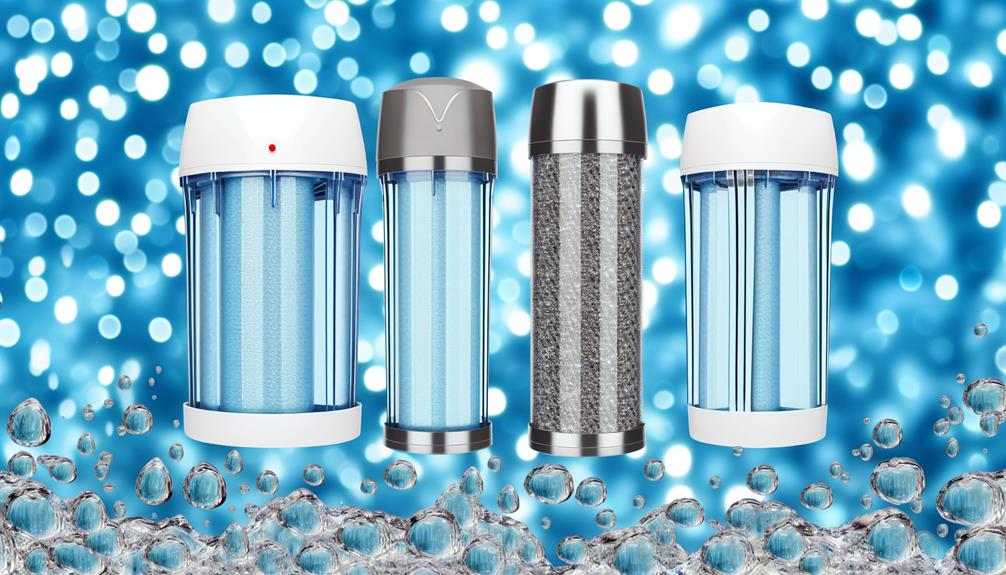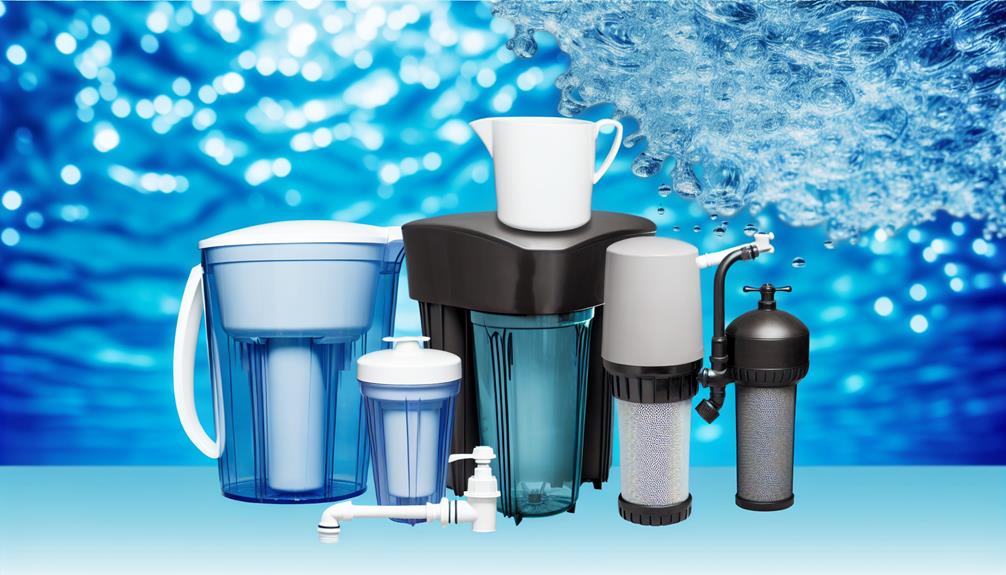You might believe that finding the right lead-removing water filter is a complex task, but it's simpler than you'd expect with the right guidance.
As you seek to safeguard your home's drinking water, it's essential to understand that not all filters are created equal.
By taking this tailored quiz, you'll pinpoint the exact technology that matches your specific needs, whether that's for cooking, drinking, or overall home use.
You'll compare sediment filtration systems, distillation units, ion exchange systems, carbon filters, and mineral addback options, all through the lens of performance, maintenance, and compliance with legal and health standards.
So, let's begin this journey together to ensure that your water is not only refreshing but also free from harmful contaminants.
What might you discover about your water supply, and how will this knowledge transform the way you think about every glass you pour?
Understanding Lead Contamination
Lead contamination in tap water, a silent intruder in many homes, poses significant health risks that necessitate a thorough understanding to ensure proper filtration and safety. Even low levels of lead exposure can be harmful, particularly for children, leading to developmental delays and learning difficulties. This contaminant, often tasteless and odorless, eludes detection without deliberate testing.
You must recognize that old plumbing systems are common culprits for introducing lead into your water supply. Regular water testing is, therefore, not just advisable but imperative to identify potential health risks. Home testing kits offer a convenient way to check water quality and assess the need for lead removal measures.
Understanding the exact nature of lead contamination is vital when choosing water filters. Not all filtration systems are created equal; some are specifically designed to tackle lead, which is crucial in mitigating the associated health hazards. When selecting a filter, precision is key. You're looking for a solution that can effectively remove lead, ensuring that the water you and your family consume isn't just clean, but safe.
The right filtration system is your defense against the insidious effects of this toxic element.
Types of Lead-Filtering Technologies
Having grasped the severity of lead contamination, let's explore the various technologies available to filter this toxic metal from your water supply. Among the types of water filters, sediment filtration acts as a preliminary barrier, capturing large particulates like sand and clay. However, it's often paired with more fine-tuned systems to tackle contaminants such as lead.
Distillation systems are the veterans of purification, condensing steam to remove a wide array of toxins, including lead. But these units are typically slow and consume more energy. On the flip side, ion exchange technology specifically targets ionic pollutants. It's effective against a range of elements, exchanging harmful ions like lead for benign ones.
Then there's activated carbon filtration, a prevalent choice due to its efficiency in trapping contaminants larger than 5 microns. Its versatility allows integration with reverse osmosis (RO) systems, creating a powerful duo certified to remove lead.
Lastly, mineral addback filters complement RO systems by reinstating essential minerals, thus enhancing the water's taste and alkalinity. These filters are FDA and NSF certified, ensuring they meet rigorous health and safety standards.
As you consider your options, weigh these technologies against your specific needs for a lead-free drinking experience.
Evaluating Filter Performance
To ensure you're selecting the most effective water filter for lead removal, it's crucial to understand its contaminant reduction capacity and how well it performs against specific impurities. Analyzing filter performance involves scrutinizing the size of contaminants it can capture, which should include particulates measured in parts per billion for lead. A filter's ability to reduce or eliminate lead and other specific contaminants like chlorine is paramount in assessing whether it will fulfill your requirements.
Additionally, consider the flow rate and maintenance demands. A filter must align with your household's water usage while also being cost-effective over time. Don't overlook the importance of consumer reviews and ratings; they often shed light on a filter's reliability and efficiency in real-world conditions.
Lastly, opting for a filter that's certified by NSF International offers a layer of assurance. This independent organization evaluates and certifies products for public health and safety, including the verification of a filter's claims about contaminant reduction. Certification implies that the filter has undergone rigorous testing and meets established standards for performance. Always verify that the filter you choose meets these critical criteria to ensure you're investing in a solution that will effectively safeguard your water supply.
Maintenance and Replacement Tips
Regular maintenance and timely replacement of your water filter's components are critical to maintaining its lead-removal efficiency and ensuring safe drinking water. Your water filtration system's long-term performance hinges on adhering to specific maintenance and replacement tips. Here's what you need to know:
- Monitor Filter Cartridges: The lifespan of filter cartridges varies based on usage and the level of contaminants in your water. Manufacturers typically suggest a timeline for replacement, but it's wise to watch for signs of diminished performance, such as reduced water flow or an off-taste in your water.
- Schedule Regular Inspections: Set reminders to inspect your system periodically. Check for any sediment buildup or signs of wear and tear that could impede the filter's function. This includes examining seals and connections for potential leaks that could compromise filtration quality.
- Follow Manufacturer's Guidelines: Each water filtration system comes with a manual containing specific instructions for maintenance. Stick to these recommendations closely to ensure optimal performance. Deviating from these guidelines can lead to ineffective filtration or even damage to your system.
Legal and Health Standards Compliance
When selecting a water filter for lead removal, it's imperative to choose one that meets or exceeds the established legal and health standards to guarantee its efficacy and safety. Compliance with standards set by authoritative bodies like NSF International or the Water Quality Association (WQA) is non-negotiable for ensuring your filter is up to the task. These organizations certify products based on stringent criteria, which include the capacity to reduce lead levels effectively.
Your focus should be on filters that boast certifications, signaling they've been rigorously tested and verified to remove contaminants according to the guidelines of independent agencies. The Environmental Protection Agency (EPA) doesn't directly endorse specific brands or products, but it does set actionable limits for lead in drinking water. A filter meeting WQA or NSF standards is likely to align with these EPA guidelines, offering you peace of mind about the quality of water you consume.
In short, don't just take a manufacturer's claims at face value. Look for the seal of approval from established and recognized certification bodies. This ensures you're not only compliant with legal requirements but also protecting your health from the dangers posed by lead and other harmful substances in water.

